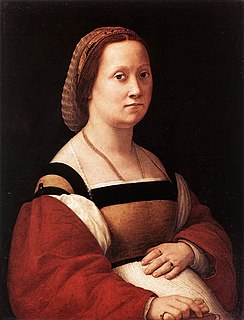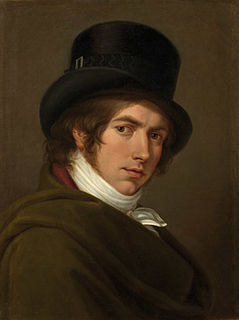Paolo Falconieri (1638–1704) was an Italian architect, painter and mathematician, from a noble family of Florence, whose intellectual interests were wide-ranging, one of the virtuosi of the first scientific century.

Florence is the capital city of the Italian region of Tuscany. It is the most populous city in Tuscany, with 383,084 inhabitants in 2013, and over 1,520,000 in its metropolitan area.
A virtuoso is an individual who possesses outstanding technical ability in a particular art or field such as fine arts, music, singing, playing a musical instrument, or composition. This word also refers to a person who has cultivated appreciation of artistic excellence, either as a connoisseur or collector. The plural form of virtuoso is either virtuosi or the Anglicisation, virtuosos, and the feminine forms are virtuosa and virtuose.
He was a member of the court of Cosimo III de' Medici, Grand Duke of Tuscany, and a prominent member of the Florentine Accademia del Cimento , selected in 1668 to accompany the secretary Lorenzo Magalotti in presenting to the Royal Society in London and to Charles II, copies of the newly printed reports of experimental science in Florence, Saggi di naturali esperienze. [1] He produced a plan for enlarging Palazzo Pitti in 1681. [2]

Cosimo III de' Medici was the penultimate (sixth) Medici Grand Duke of Tuscany. He reigned from 1670 to 1723, and was the elder son of Grand Duke Ferdinando II. Cosimo's 53-year-long reign, the longest in Tuscan history, was marked by a series of ultra-reactionary laws which regulated prostitution and banned May celebrations. His reign also witnessed Tuscany's deterioration to previously unknown economic lows. He was succeeded by his elder surviving son, Gian Gastone, when he died, in 1723.
The Accademia del Cimento, an early scientific society, was founded in Florence in 1657 by students of Galileo, Giovanni Alfonso Borelli and Vincenzo Viviani and ceased to exist about a decade later. The foundation of Academy was funded by Prince Leopoldo and Grand Duke Ferdinando II de' Medici. The tenets of the society included:

Lorenzo Magalotti was an Italian philosopher, author, diplomat and poet.
This page is based on this
Wikipedia article Text is available under the
CC BY-SA 4.0 license; additional terms may apply.
Images, videos and audio are available under their respective licenses.

Pietro da Cortona was an Italian Baroque painter and architect. Along with his contemporaries and rivals Gian Lorenzo Bernini and Francesco Borromini, he was one of the key figures in the emergence of Roman Baroque architecture. He was also an important designer of interior decorations.

The Palazzo Pitti, in English sometimes called the Pitti Palace, is a vast, mainly Renaissance, palace in Florence, Italy. It is situated on the south side of the River Arno, a short distance from the Ponte Vecchio. The core of the present palazzo dates from 1458 and was originally the town residence of Luca Pitti, an ambitious Florentine banker.
Villa del Poggio Imperiale is a predominantly neoclassical former grand ducal villa in Arcetri, just to the south of Florence in Tuscany, central Italy. Beginning as a villa of the Baroncelli of Florence, it was seized by the Medici, became the home of a homicidal and unfaithful husband, and a lavish retreat for a Grand Duchess with imperial pretensions. Later given to Napoleon's sister, it was reclaimed by the hereditary rulers of Tuscany before being finally converted to a prestigious girls' school. During its long history, it has often been at the centre of Italy's turbulent history, and has been rebuilt and redesigned many times.

Silvestro Lega was an Italian realist painter. He was one of the leading artists of the Macchiaioli and was also involved with the Mazzini movement.
Aristodemo Costoli (1803–1871) was an Italian sculptor who spent his entire career in the city of Florence. His students included Girolamo Masini, Augusto Rivalta and his son Leopoldo Costoli.

Bernardino Poccetti, also known as Barbatelli, was an Italian Mannerist painter and printmaker of etchings.

Matteo Rosselli was an Italian painter of the late Florentine Counter-Mannerism and early Baroque. He is best known however for his highly populated grand-manner historical paintings.

Pietro Paolo Bonzi, also known as il Gobbo dei Carracci or il Gobbo dei Frutti, was an Italian painter, best known for his landscapes and still-lifes. A cartoon of the painter shows his highly deformed lordotic posture.

La donna gravida is an oil on wood portrait by the Italian High Renaissance artist Raphael. It was painted between 1505 and 1506, during Raphael's stay in Florence, Italy. It is now in the Palazzo Pitti in Florence.

Vincenzo Meucci (1694–1766) was an Italian painter of the late-Baroque period. Born in Florence. He was a pupil first of the painter Sebastiano Galeotti, then of Giovanni Gioseffo dal Sole in Bologna.

Pietro Benvenuti was an Italian neoclassical painter.

The Portrait of Daniele Barbaro is a painting by the Italian Renaissance master Paolo Veronese in the Rijksmuseum Amsterdam.
Daniele Barbaro was a member of the Venetian aristocracy. He was an important prelate, humanist and architectural theorist, who commissioned a number of works from Veronese. Veronese had been involved directly with Barbaro and his brother Marcantonio Barbaro, decorating the Villa Barbaro, Maser, which Palladio designed.

Bartolomeo Cavarozzi was an Italian caravaggisti painter of the Baroque period active in Spain, alongside his master Giovanni Battista Crescenzi.

The Medici villas are a series of rural building complexes in Tuscany which were owned by members of the Medici family between the 15th century and the 17th century. The villas served several functions: they were the country palaces of the Medici, scattered over the territory that they ruled, demonstrating their power and wealth. They were also recreational resorts for the leisure and pleasure of their owners; and, more prosaically, they were the centre of agricultural activities on the surrounding estates. In 2013, the Medici villas were added to UNESCO's World Heritage list.

The historic centre of Florence is part of quartiere 1 of the Italian city of Florence. This quarter was named a World Heritage Site by UNESCO in 1982.

Andrea del Sarto was an Italian painter from Florence, whose career flourished during the High Renaissance and early Mannerism. Though highly regarded during his lifetime as an artist senza errori, his renown was eclipsed after his death by that of his contemporaries, Leonardo da Vinci, Michelangelo and Raphael.

The following outline is provided as an overview of and topical guide to Florence:

















